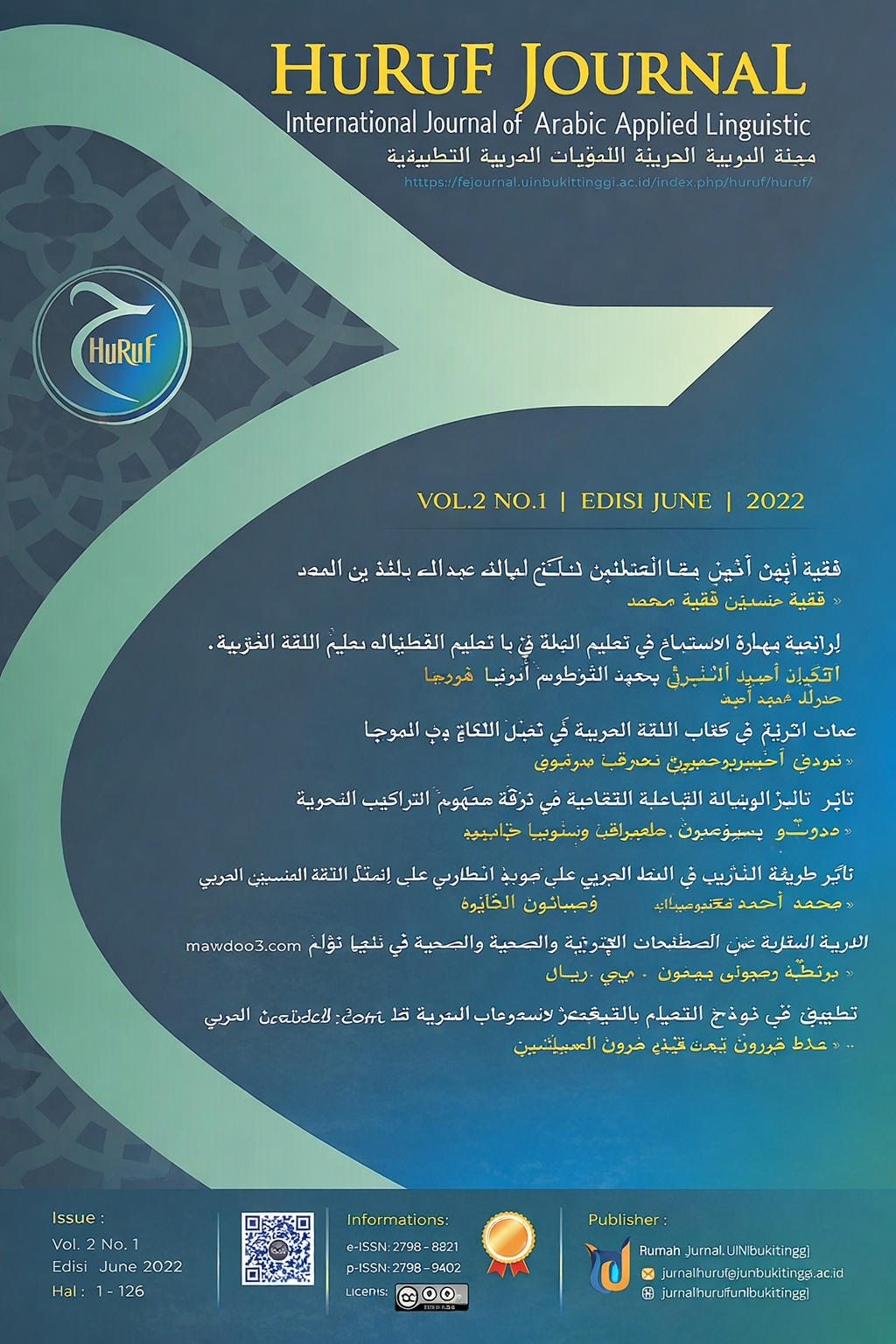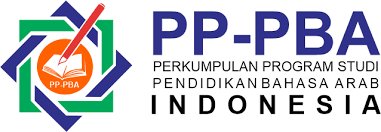‘AlÄmÄt at-TarqÄ«m fÄ« KitÄb al-Lughah al-‘Arabiyyah bi Indonesia (TaḥlÄ«l al-Akhá¹Ä' min al- KitÄb al-Muqarrar lil-Faá¹£l al-SÄbi’ fÄ« al-Marḥalah al-Mutawassiá¹ah)
DOI:
https://doi.org/10.30983/huruf.v2i1.5517Keywords:
Punctuations, Arabic Lesson BookAbstract
This research aimed to identify the errors in the use of punctuations in the Arabic lesson book for 7th-grade students of Islamic Junior High School published by the Ministry of Religious Affairs Republic of Indonesia. This book is good, and it pays great attention to the writing rules of hamzah, tanwin, mad letters, and tasydid. However, the researcher found many errors in the use of punctuation marks. Thus, on the findings, it is expected that there will be more attention and improvement afterward. This research is descriptive qualitative research by the following error findings: exclamation mark (!), period (.), comma (,), question mark (?), brackets (), quotation marks “… “, hyphen (-), and slash (/). First, the error is in its use in sentences, and the placement of spaces as the book’s author follows the rules of Indonesian punctuation. Second, some texts only use periods (.) and commas () due to the author’s lack of knowledge of Arab and world culture, and he focuses only on mufradat. Third, there are reading texts that do not follow the instructions of the Rekon Text.
يهد٠هذا البØØ« إلى التّعرّ٠على نوع الأخطاء ÙÙŠ استخدام علامات التّرقيم ÙÙŠ الكتاب المقرّر للÙصل السّابع للمرØلة المتوسّطة الّتي أصدرت به وزارة الشّؤون الدّينيّة بلإندونيسيا. هذا الكتاب جيّد ومهتمّ بقواعد المزات والتّنوين ÙˆØرو٠المدّ والتّشديد. ولكن، وجدت الباØثة أخطاء كثيرة ÙÙŠ استخدام علامات التّرقيم. ومن خلال النّتاؤج، رجاء المزيد من الاهتمام والتّØسين بعدÙ. هذا البØØ« هو بØØ« وصÙيّ من Øيث الأخطاء التّالية: علامة التّعجّب (!)ØŒ النّقطة (.)ØŒ الÙاصلة (ØŒ)ØŒ علامة الاستÙهام (ØŸ)ØŒ القوسان ()ØŒ علامة الاقتباس "..."ØŒ الواصلة (-)ØŒ وشرطة مائلة (/). أولاً، الخطأ استخداماً ÙÙŠ الجمل ووضع المساÙØ© Øيث يتّبع مؤلّ٠الكتاب قواعد التّرقيم الإندونيسيّة. ثانياً، هناك بعض النّصوص الّتي تستخدم الÙواصل (.) والÙاصلات (ØŒ) Ùقط يسبّب قلّة المادّة بالثّقاÙØ© العربيّة والعالميّة وتركّز على المÙردات ÙØسب. ثالثاً، هناك النّصوص لا تتّÙÙ‚ بتعليمات النّص السّرديّ.
References
Al-GhÄniy, Aiman AmÄ«n ’Abd, Al-KÄfiy FÄ« QawÄÊ¿id Al-ImlÄ’ Wa Al-KitÄbah (Kairo: DÄr al-TaufÄ«qiyyah lil-TurÄth, 2012)
Al-Ḥaqqani, al-Shaikh FaiḠal-RaḥmÄn, Ê¿AlÄmÄt Al-TarqÄ«m Wa Uṣūl Al ImlÄ’ (Beirut: DÄr al-Kutub al-Ê¿Ilmiyyah, 2015)
Baharuddin, Faruq, Bahasa Arab Kelas VII Madrasah Tsanawiyah (Jakarta: Kementerian Agama, 2020)
Djajasudarma, Metode Linguistik (Bandung: Refika Aditama, 2010)
Effendy, Ahmad Fuad, Sejarah Peradaban Arab & Islam (Malang: Misykat Indonesia, 2012)
Moleong, L.J., Metode Penelitian Kualitatif (Bandung: Remaja Rosdakarya, 2017)
Raharja, Hatta, ‘Tanda Baca Dalam Bahasa Arab’, Jurnal Alfaz, 2 (2014)
Downloads
Published
How to Cite
Issue
Section
Citation Check
License
Copyright (c) 2022 Putri Kholida Faiqoh

This work is licensed under a Creative Commons Attribution-ShareAlike 4.0 International License.
Authors who publish with this journal agree to the following terms:
- Authors retain copyright and grant the journal right of first publication with the work simultaneously licensed under a Creative Commons Attribution-ShareAlike 4.0 International Licensethat allows others to share the work with an acknowledgment of the work's authorship and initial publication in this journal.
- Authors are able to enter into separate, additional contractual arrangements for the non-exclusive distribution of the journal's published version of the work (e.g., post it to an institutional repository or publish it in a book), with an acknowledgment of its initial publication in this journal.
- Authors are permitted and encouraged to post their work online (e.g., in institutional repositories or on their website) prior to and during the submission process, as it can lead to productive exchanges, as well as earlier and greater citation of published work (See The Effect of Open Access).





